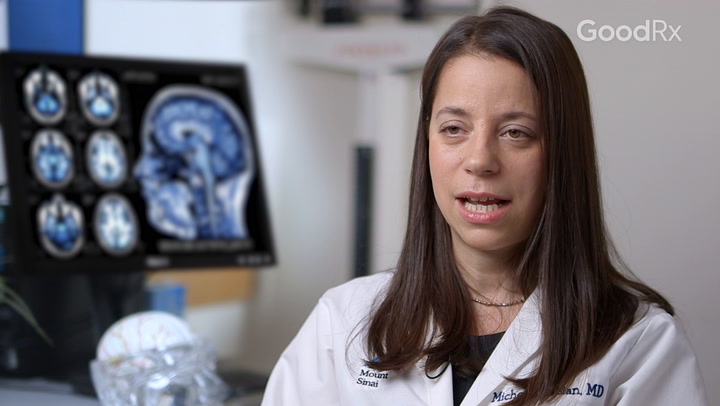
4 Early Symptoms of Multiple Sclerosis in Women
Key takeaways:
Multiple sclerosis (MS) is an autoimmune condition that’s more common in women.
Early symptoms of MS include blurred vision, pain with eye movement, fatigue, numbness, or tingling.
There’s no cure for MS, but medications can help slow down the condition and prevent complications.

Multiple sclerosis (MS) is an autoimmune condition that affects the brain and spinal cord. People tend to develop MS in early adulthood. But not everyone is at equal risk for developing MS. One study noted that women are about three times more likely to develop MS than men.
Understanding MS symptoms can help people decide if they need to seek medical care. Here’s what to know about MS symptoms in women.
Why does multiple sclerosis affect women more often than men?
It’s not clear why women are more commonly diagnosed with MS than men. Scientists believe the difference may be due to several factors, like differences in:
Genetics: The X chromosome is linked to autoimmune function. Having two X chromosomes may increase women’s risk of developing autoimmune conditions, including MS.
Hormones: Estrogen, progesterone, and testosterone levels also influence whether or not someone develops an autoimmune condition, like MS.
Accessing medical care: There’s evidence suggesting that women seek care sooner for symptoms of MS. This can make it seem like more women have MS than men. But, in reality, women are just more likely to seek help and get diagnosed.
So far, these are only theories. More research is needed to know for sure why some people are more likely to develop MS than others.
When do women usually develop multiple sclerosis?
Women can develop MS at any point in their lives. But most people are diagnosed between ages 20 and 40.
Women tend to get diagnosed with MS at earlier ages than men. Again, it’s not clear if this is because women are more likely than men to seek medical care for their symptoms.
Monoclonal antibodies can slow down multiple sclerosis (MS). Our experts review how monoclonal antibodies can help treat MS.
What’s it like to live with MS? One woman shares her story with GoodRx.
Injectable medications aren’t the only options. Learn more about oral medications that can help treat MS.
What are the earliest warning signs of multiple sclerosis in women?
Early symptoms of MS can be subtle and easy to miss. They may also get better on their own for a time before coming back. This can make it hard for people to know whether or not they should seek care or wait for the symptoms to go away.
Some early signs of MS you shouldn’t ignore are discussed below.
1. Vision changes or pain with eye movement.
Vision problems are the most common early sign of MS. People with MS may notice vision changes like:
Blurred vision
Eye pain
Pain with eye movement
Changes in color perception (colors looking “washed out”)
Trouble seeing in low light conditions
These symptoms are signs of optic neuritis. Optic neuritis develops when the optic nerve, which connects the eye to the brain, gets inflamed. About half of people with MS experience optic neuritis at some point in their lives. For some people, an episode of optic neuritis is what leads to their MS diagnosis.
2. Double vision
MS may weaken the muscles around the eyes. When this happens, the muscles in the eye aren’t able to hold the eyeballs in alignment with one another.
Some people develop double vision because of eye muscle weakness. Double vision may make it seem like there are two of something, side by side or on top of each other.
People with more subtle double vision may notice they have trouble going down stairs or find themselves tilting their heads to see better.
3. Fatigue
Many people with MS experience fatigue. They may describe this sensation in different ways. They may feel weak, tired, or like they have less energy than normal. Some people describe a feeling of complete exhaustion. Others may notice difficulty concentrating, mood changes, or brain fog.
It’s normal to feel fatigued from time to time. But with MS, the feeling may persist for a long time or get worse. People also aren’t able to pinpoint a reason for their fatigue — such as increased stress, illness, or interrupted sleep.
4. Numbness
Numbness is a common symptom of early MS, especially on areas of the face or on the extremities, like the:
Arms
Hands
Legs
Feet
People can experience numbness in different ways:
Some people may notice a decreased sensation.
Others may experience changes in sensation, like a tingling sensation.
And others may first notice that it’s harder to complete certain activities. Subtle hand or finger numbness can make it harder to do things like button clothes, comb their hair, or tie a tie. Numbness in the legs and feet change the way you walk.
People may interpret these as muscle weakness or increased clumsiness instead of weakness.
Can multiple sclerosis be cured or prevented?
There’s no cure for MS. And there’s no way to prevent MS from developing either. But there are medications that can help people manage MS. Medications that treat MS try to stop the autoimmune system from attacking the nervous system. This stops inflammation and damage to the nervous system.
Medication can slow down how quickly MS progresses over time. Treatment also prevents how often people experience relapses of MS symptoms. And it shortens the duration of any breakthrough relapses.
The bottom line
MS affects women more often than men. But scientists aren’t sure why this happens. Symptoms of MS vary from person to person. But the most common symptoms of MS in women include vision changes and eye pain, fatigue, numbness, and weakness. Seek medical care if you’re experiencing these symptoms. Your healthcare team can determine if MS or another condition is causing your symptoms.
Why trust our experts?


References
Eccles, A. (2019). Delayed diagnosis of multiple sclerosis in males: May account for and dispel common understandings of different MS ‘types.’ British Journal of General Practice.
Ghasemi, N., et al. (2016). Multiple sclerosis: Pathogenesis, symptoms, diagnoses and cell-based therapy. Cell Journal.
National Institute of Neurological Disorders and Stroke. (2025). Multiple sclerosis. National Institutes of Health.
National Multiple Sclerosis Society. (n.d.). Women living with multiple sclerosis.
Penn Medicine. (n.d.). About multiple sclerosis (MS).
Walllin, M. T., et al. (2019). The prevalence of MS in the United States. Neurology.

























